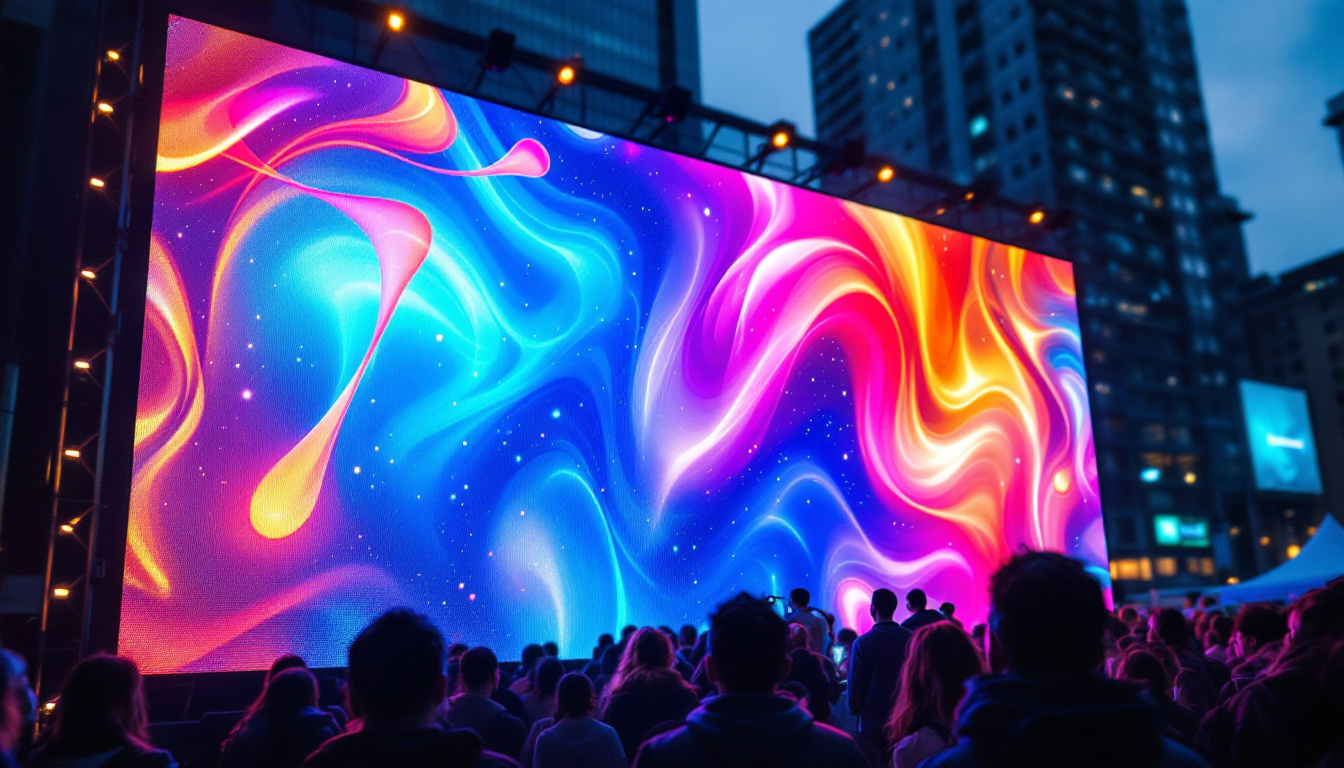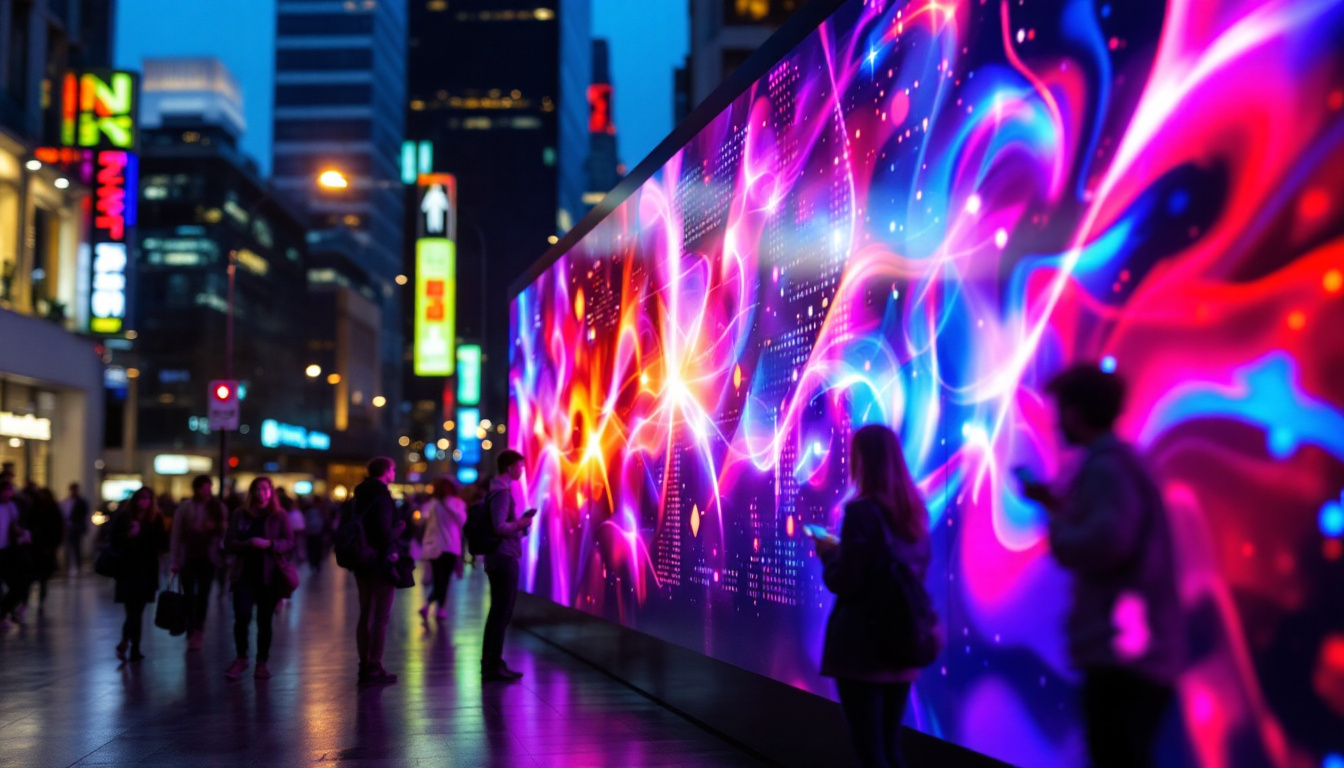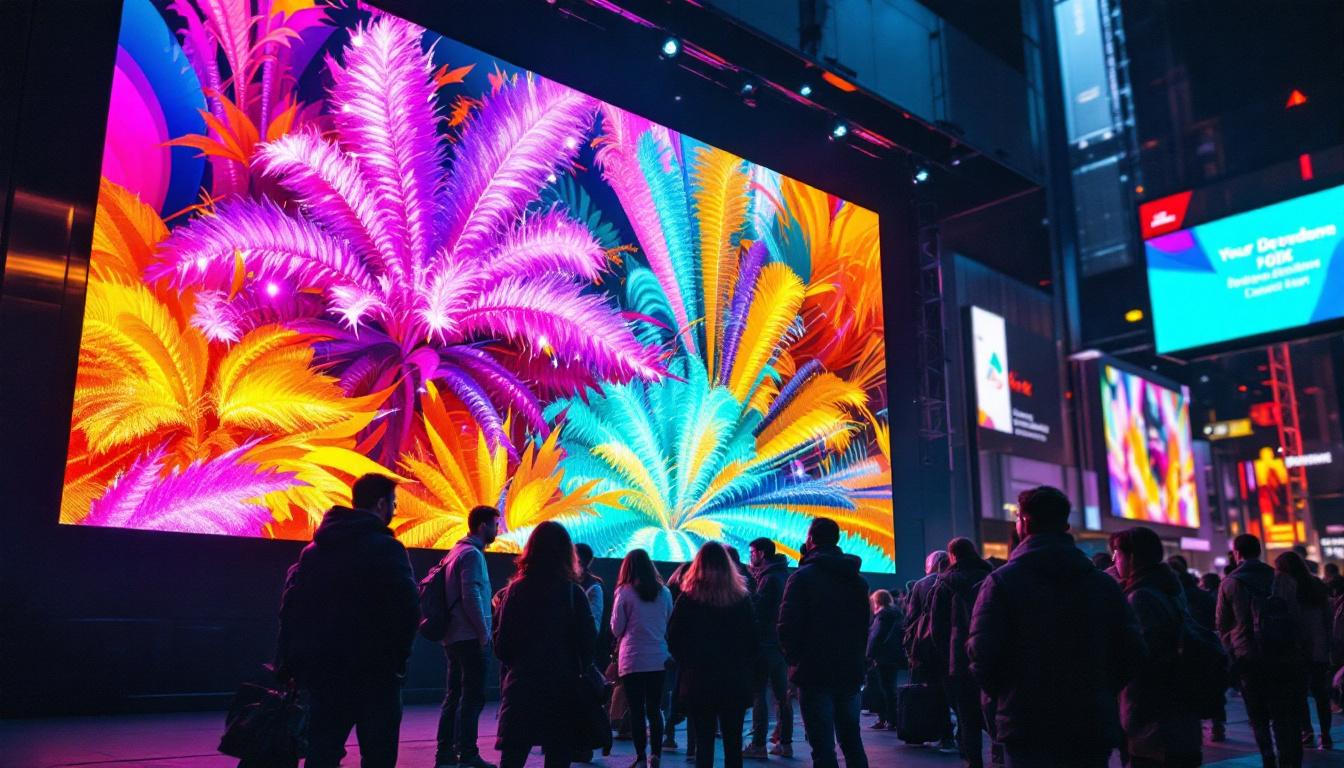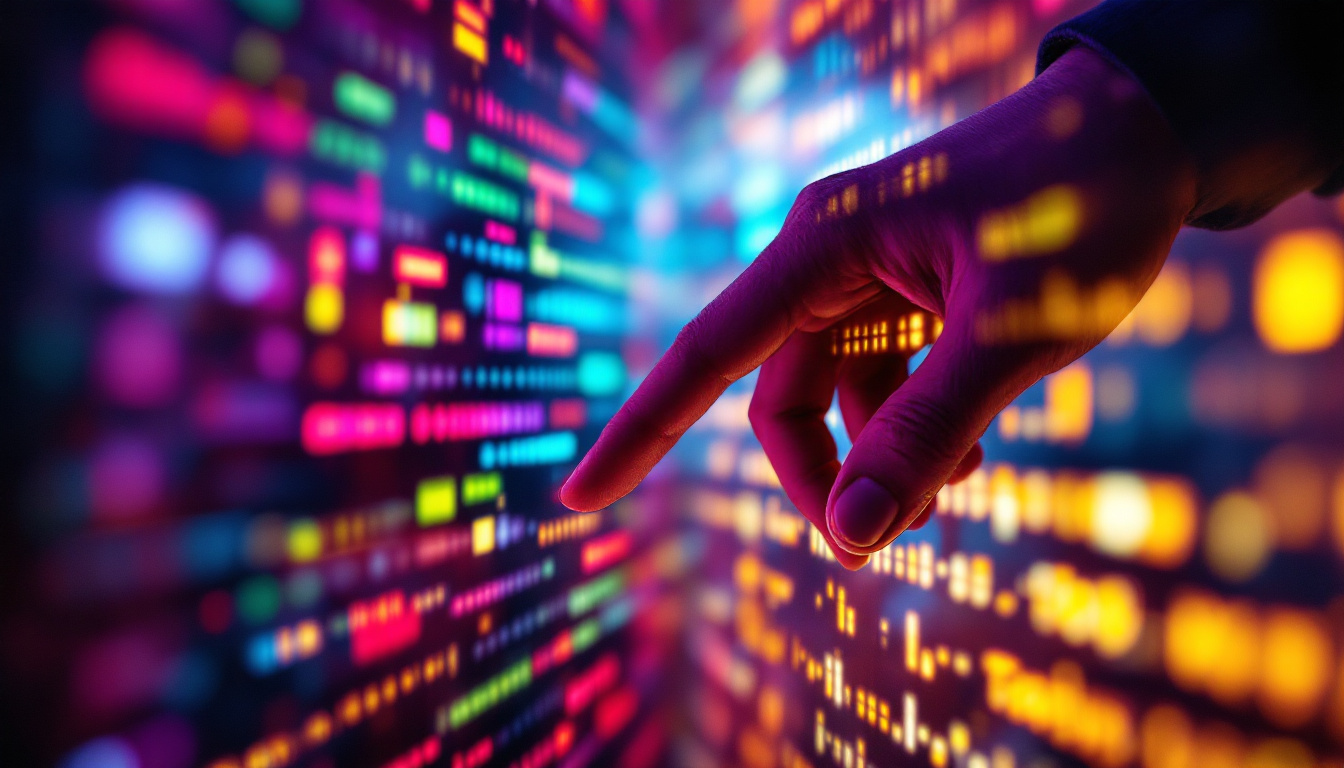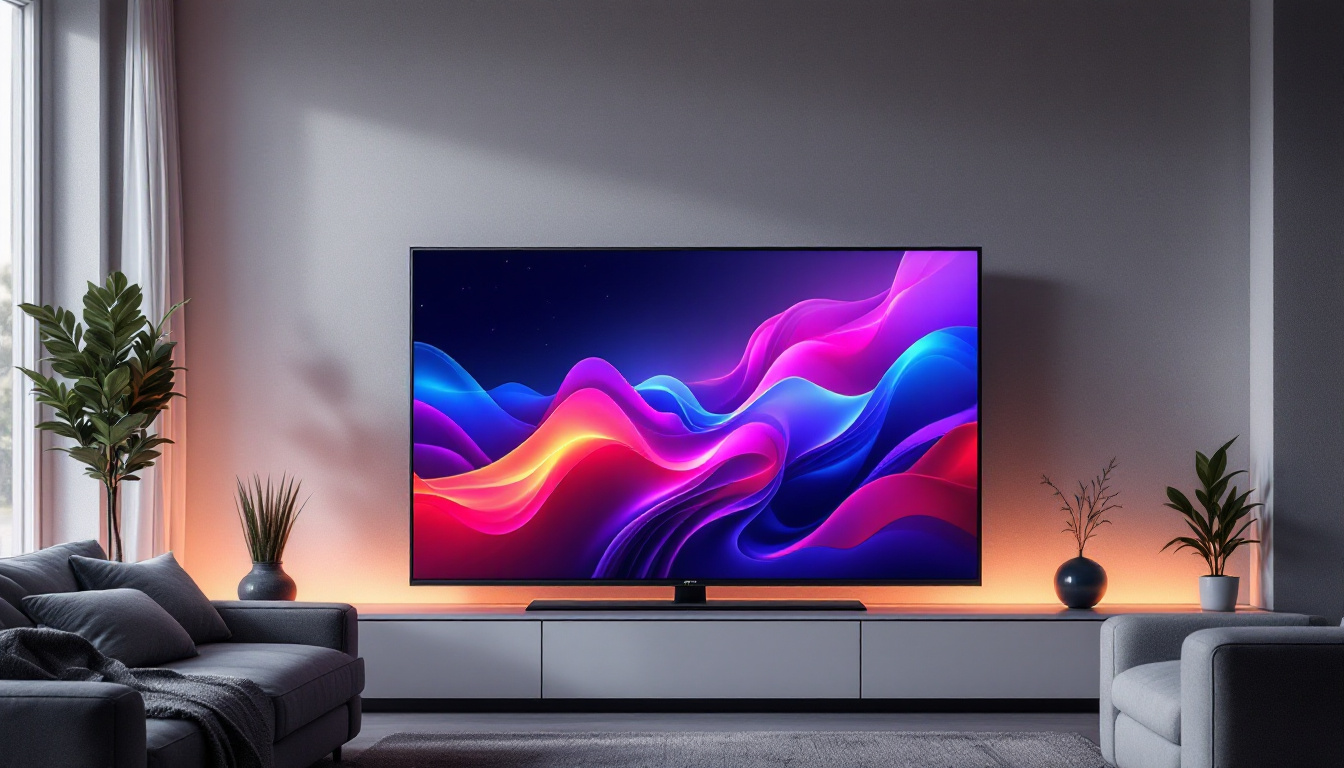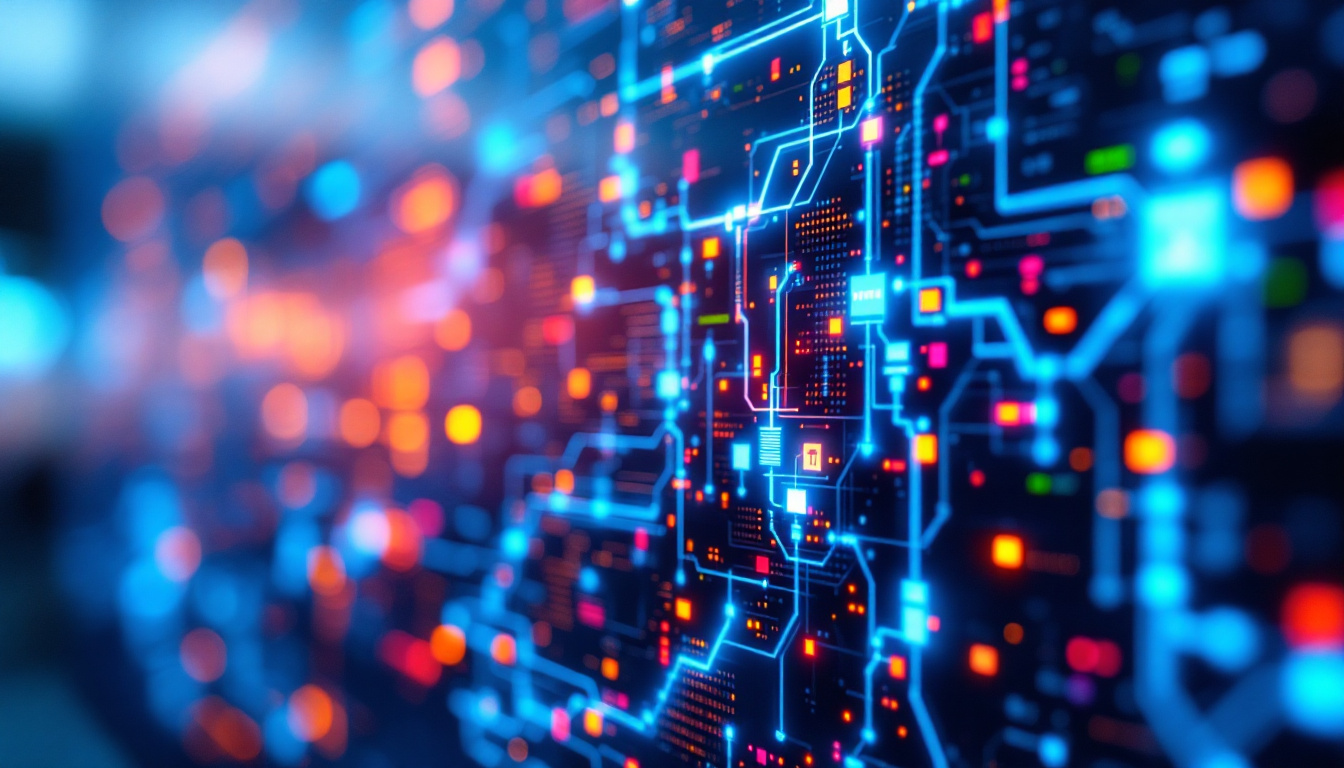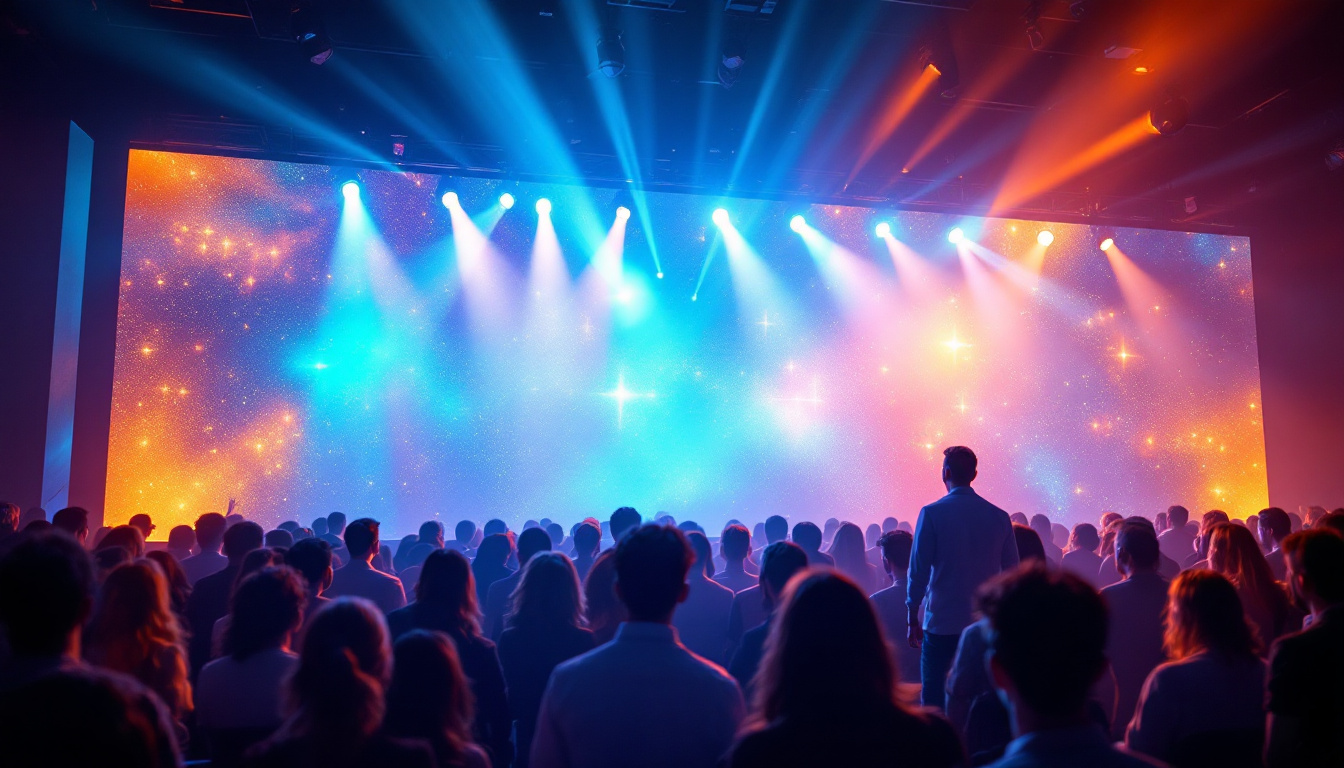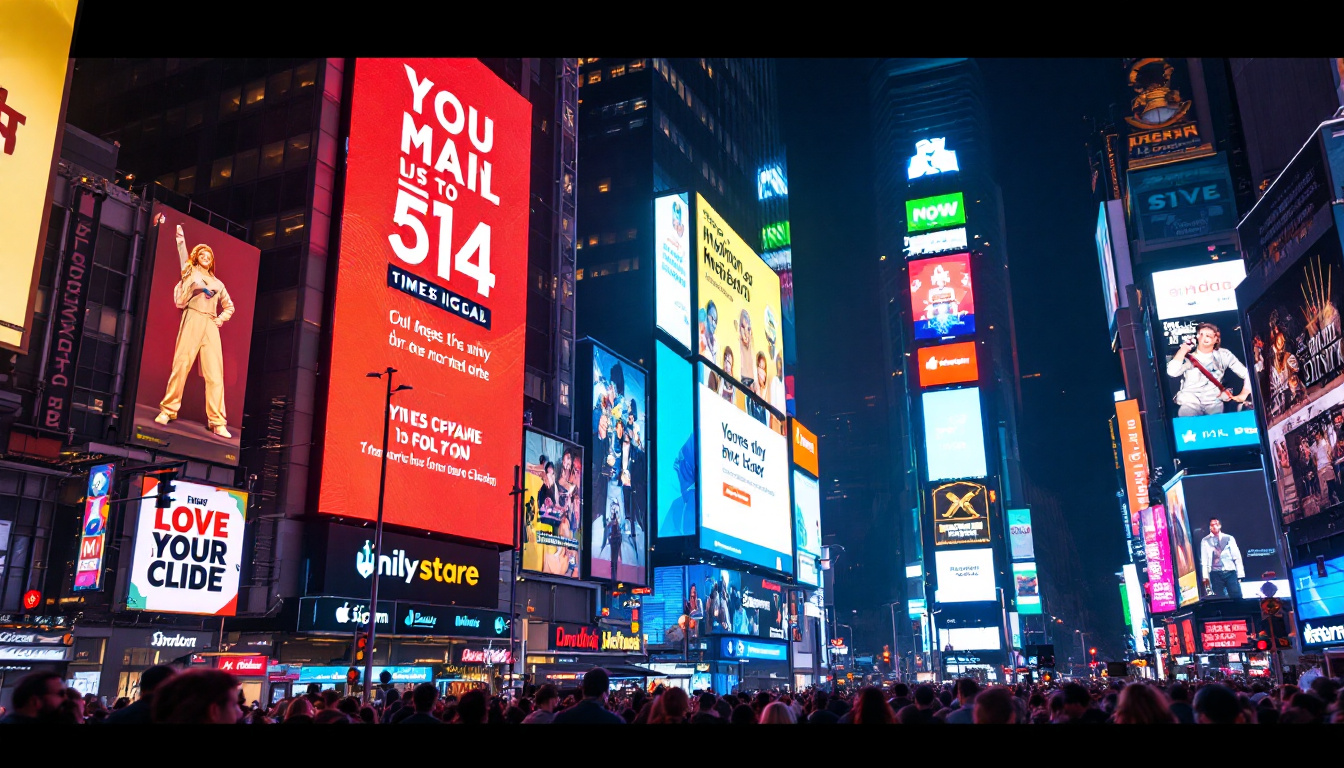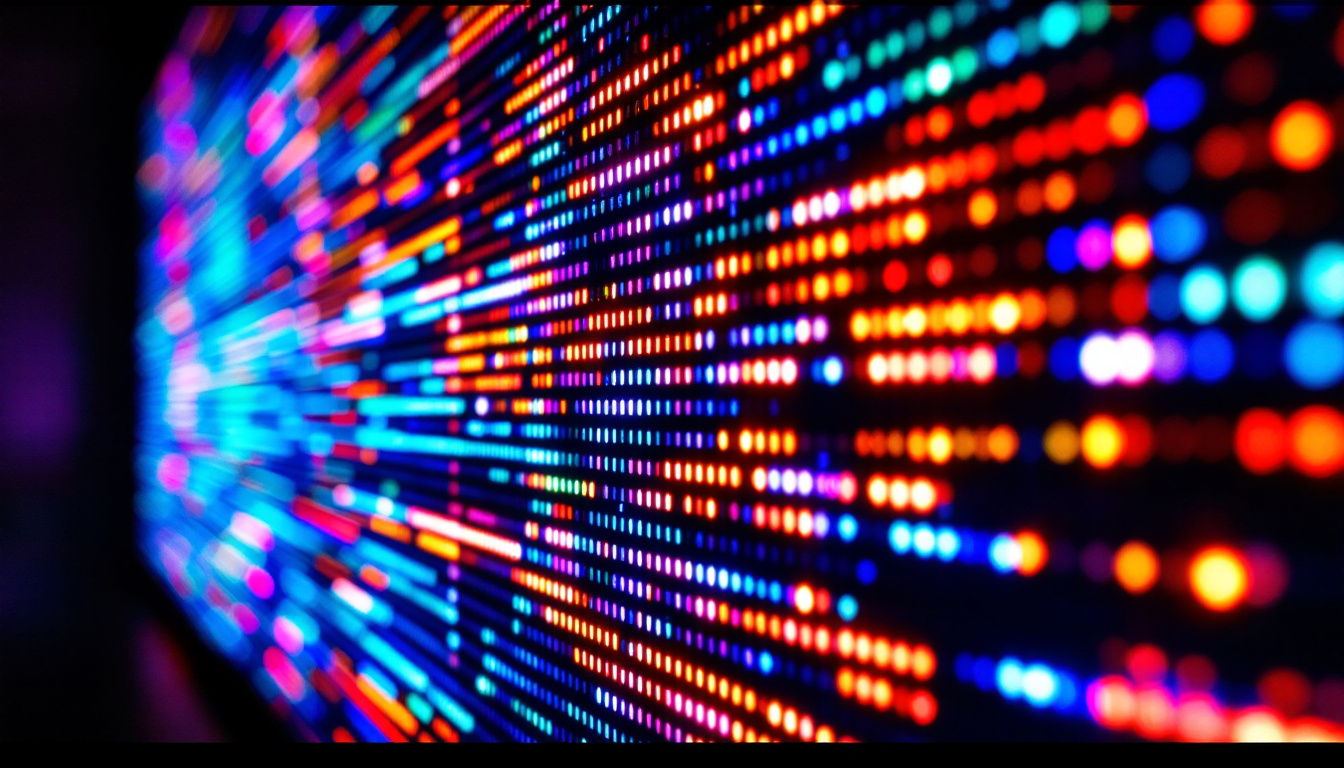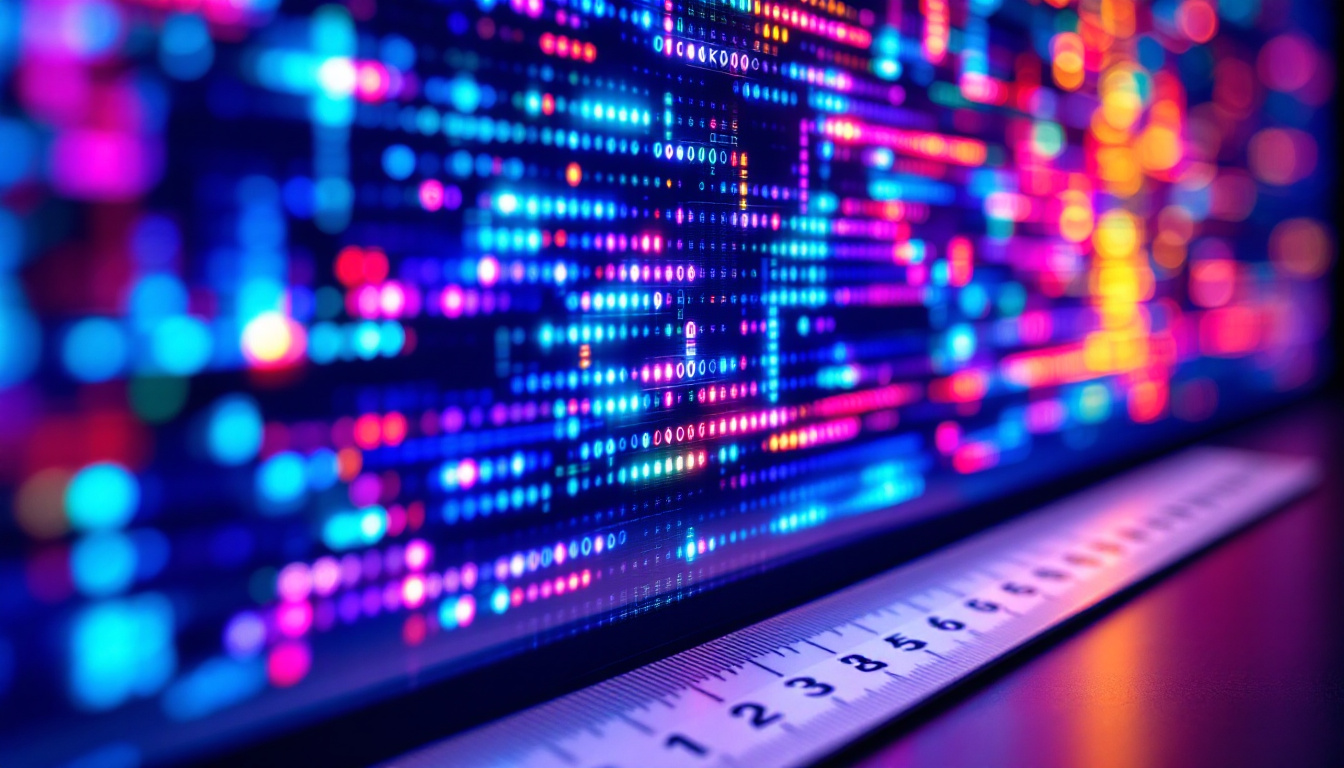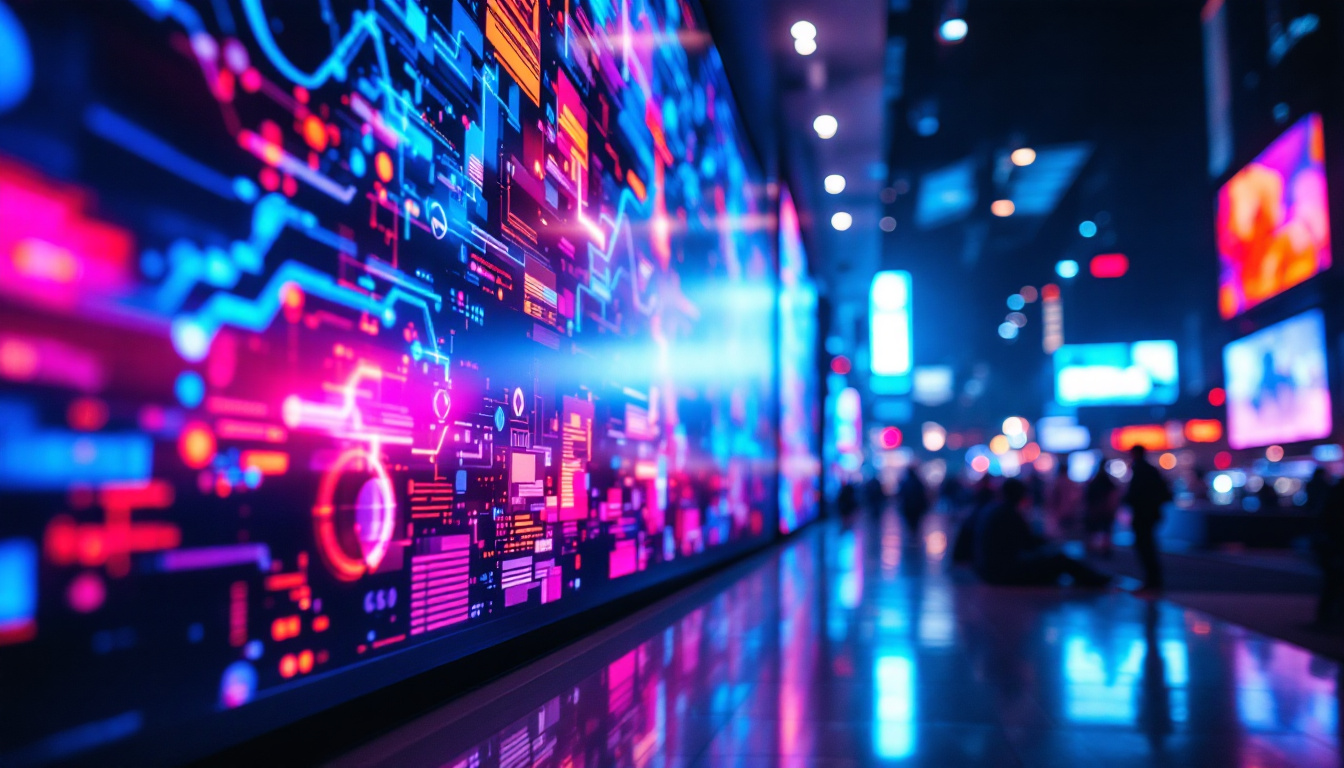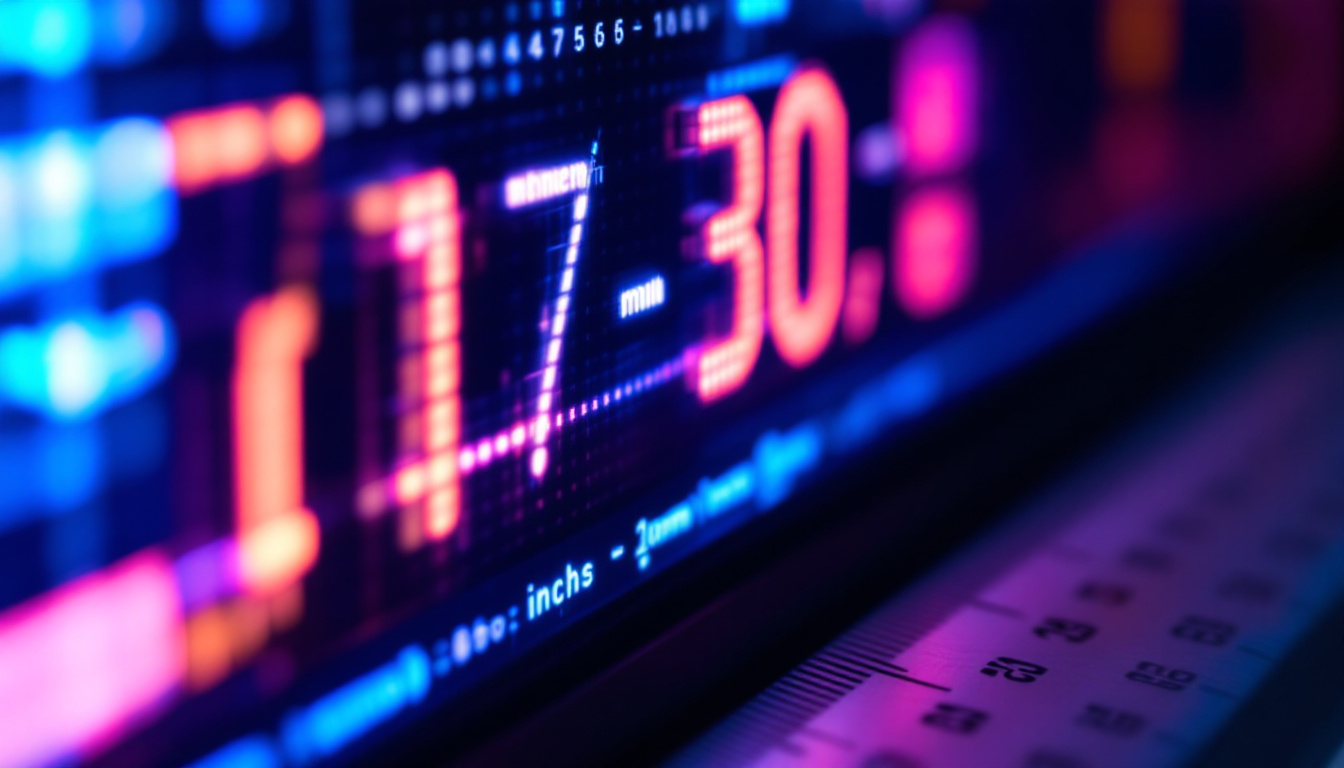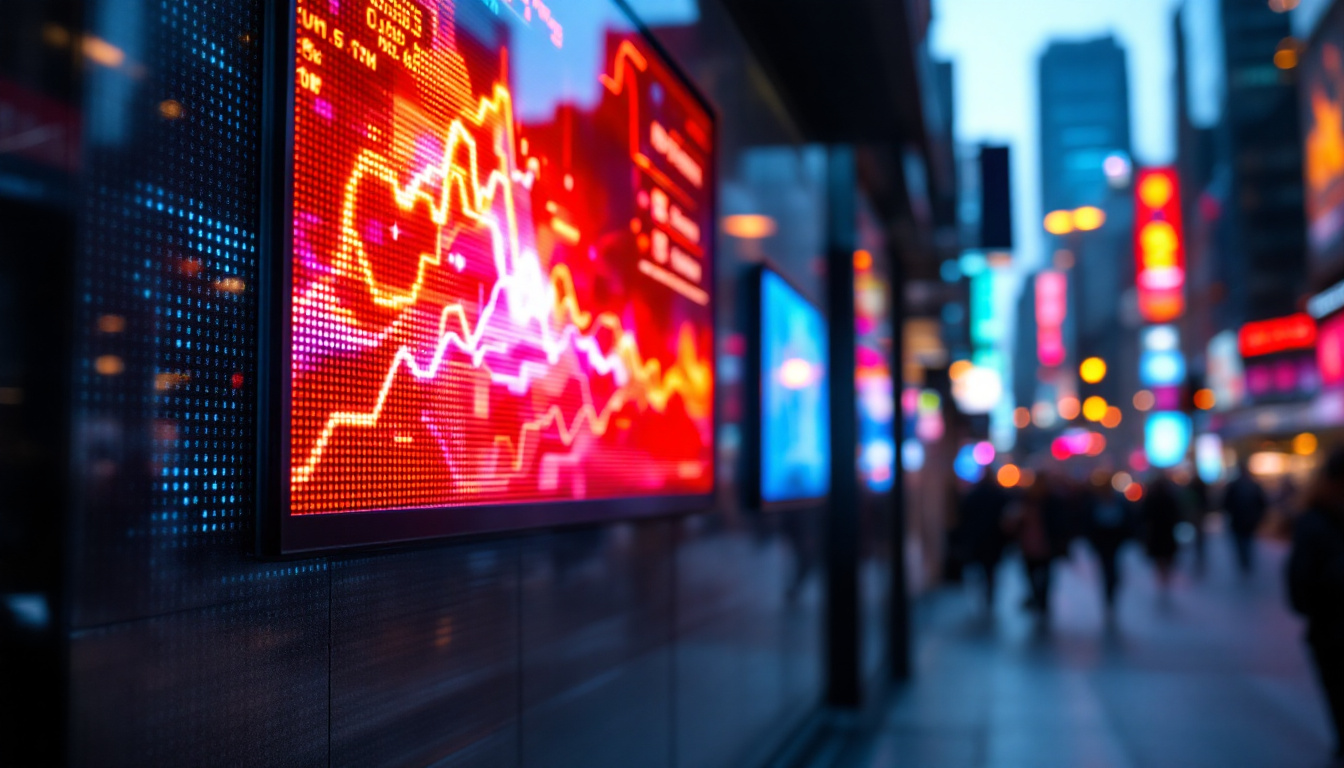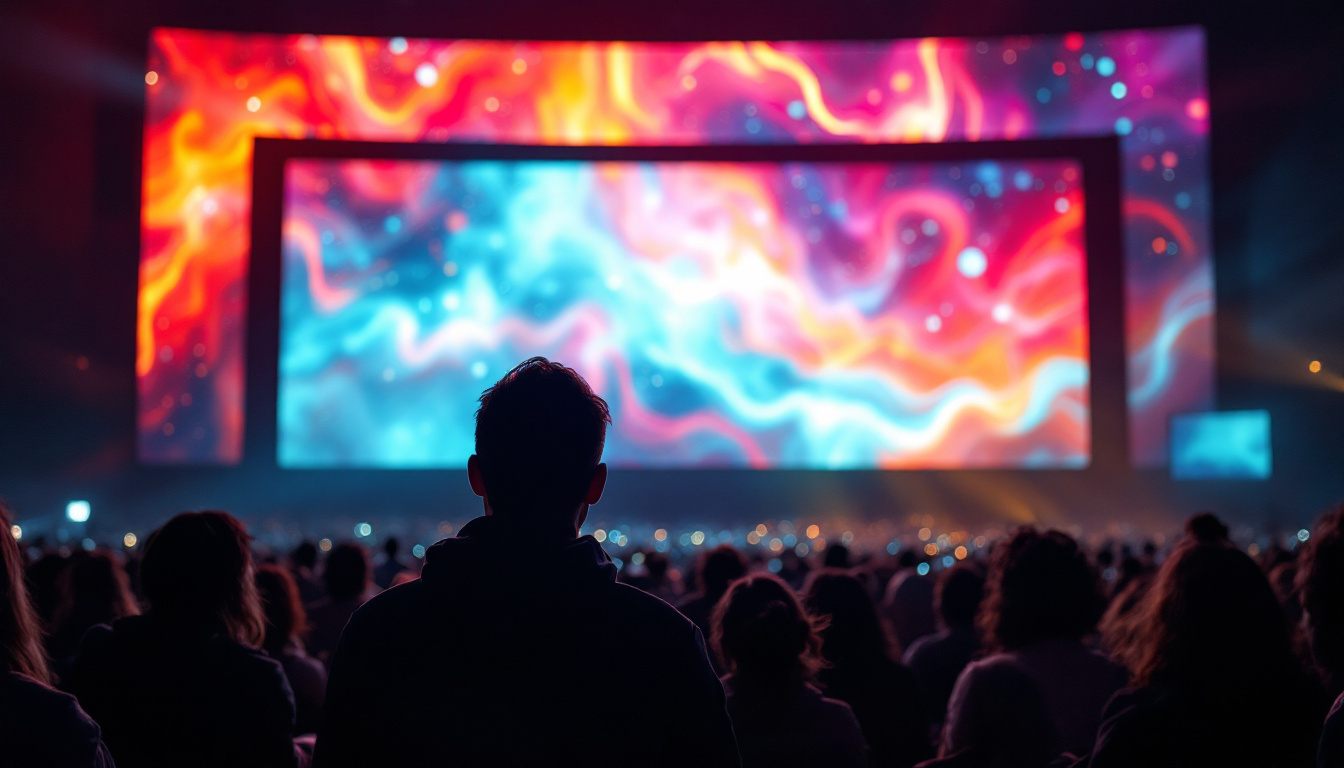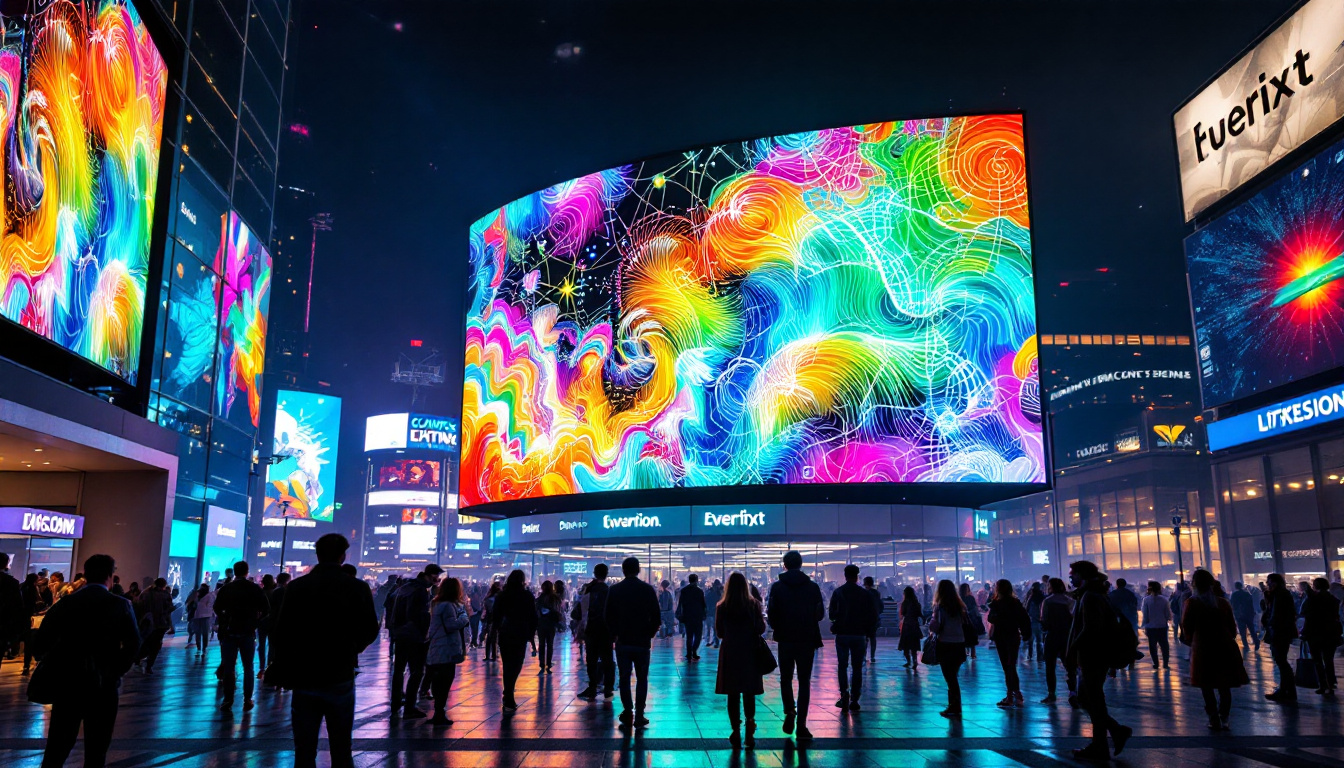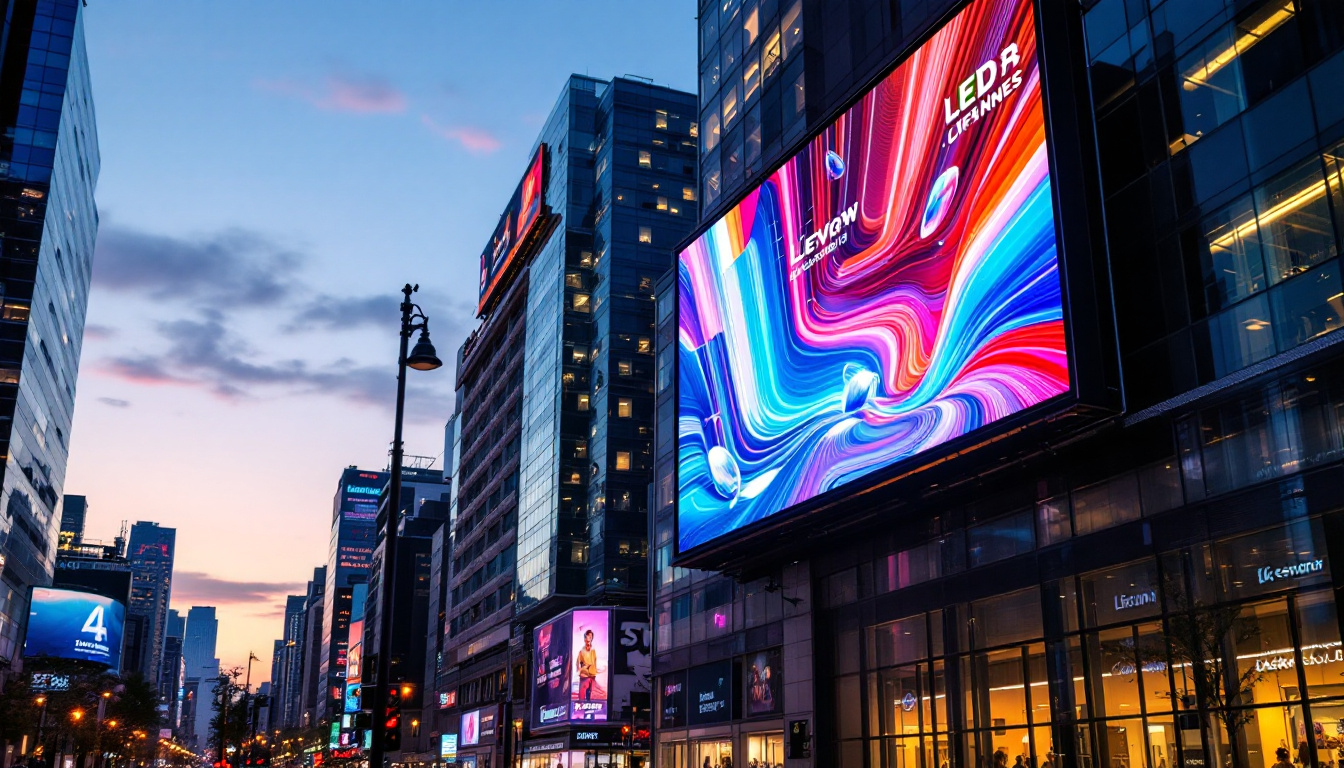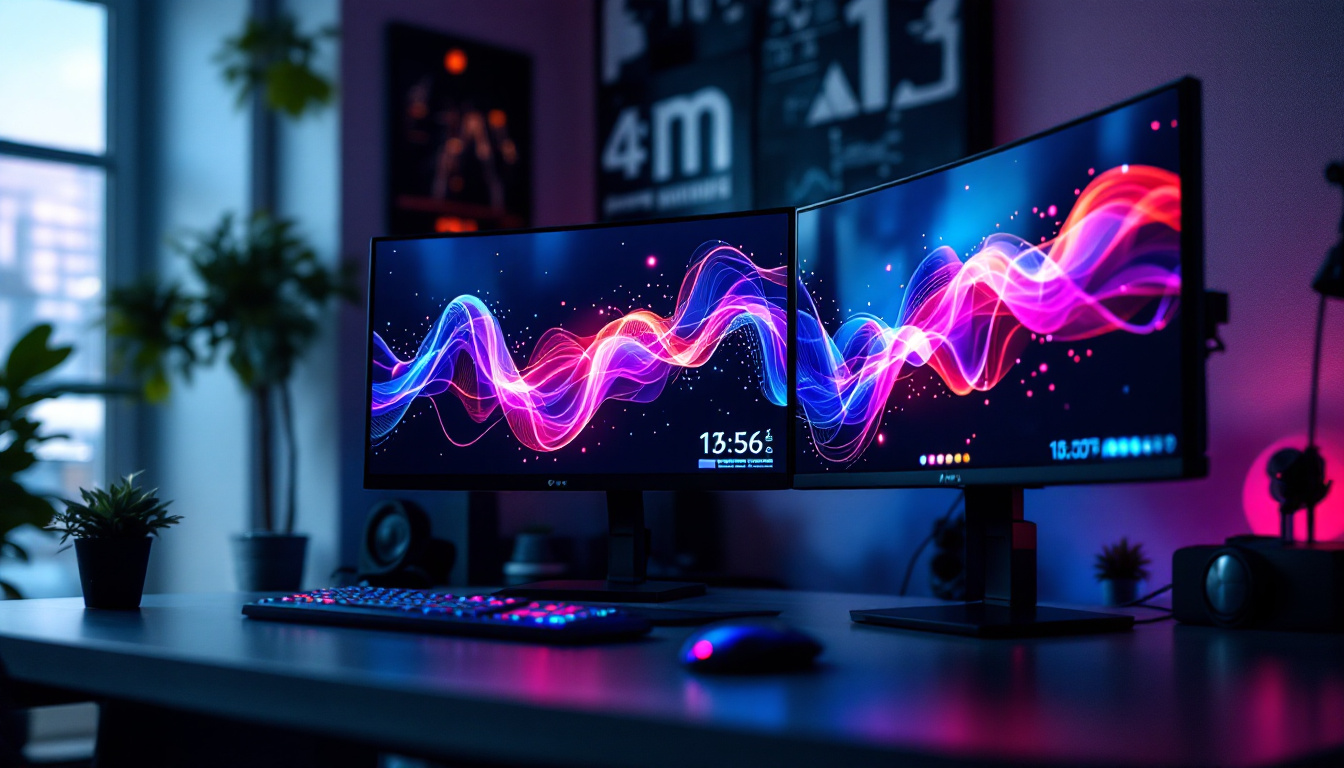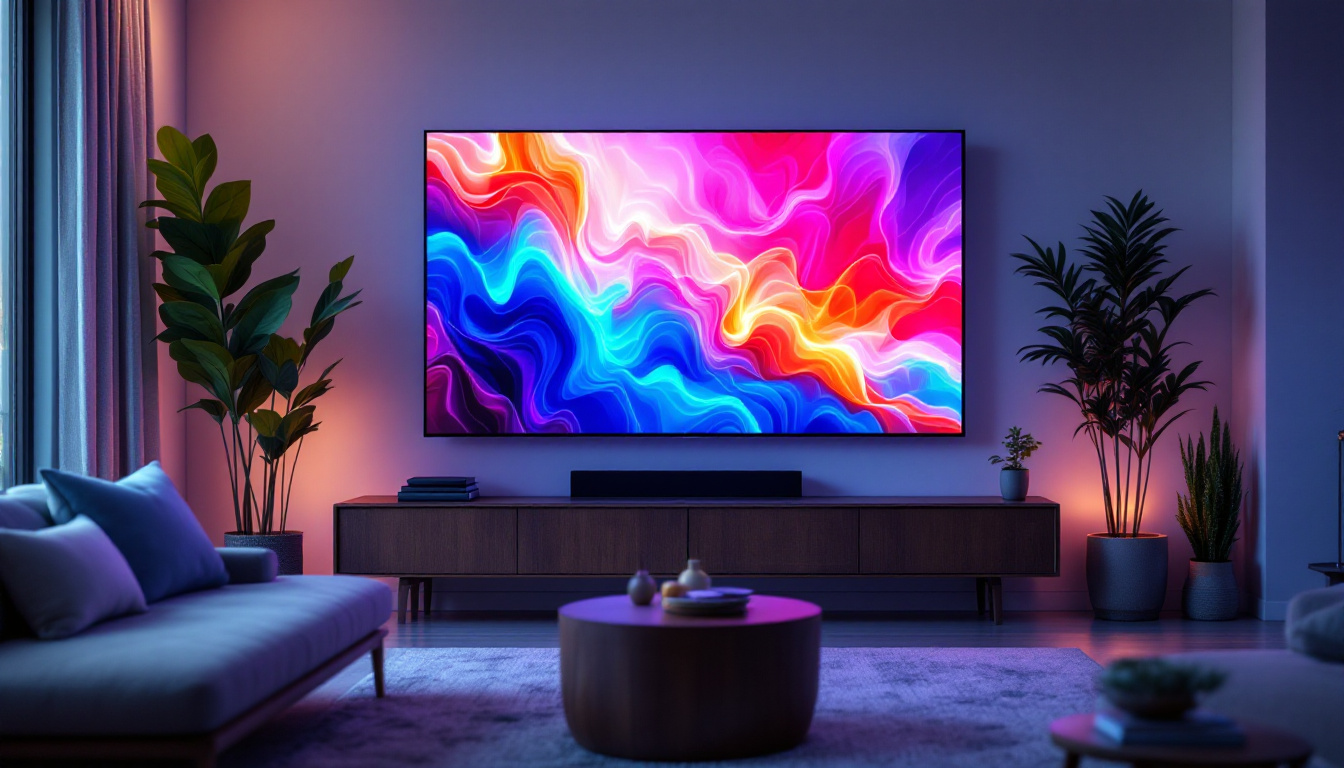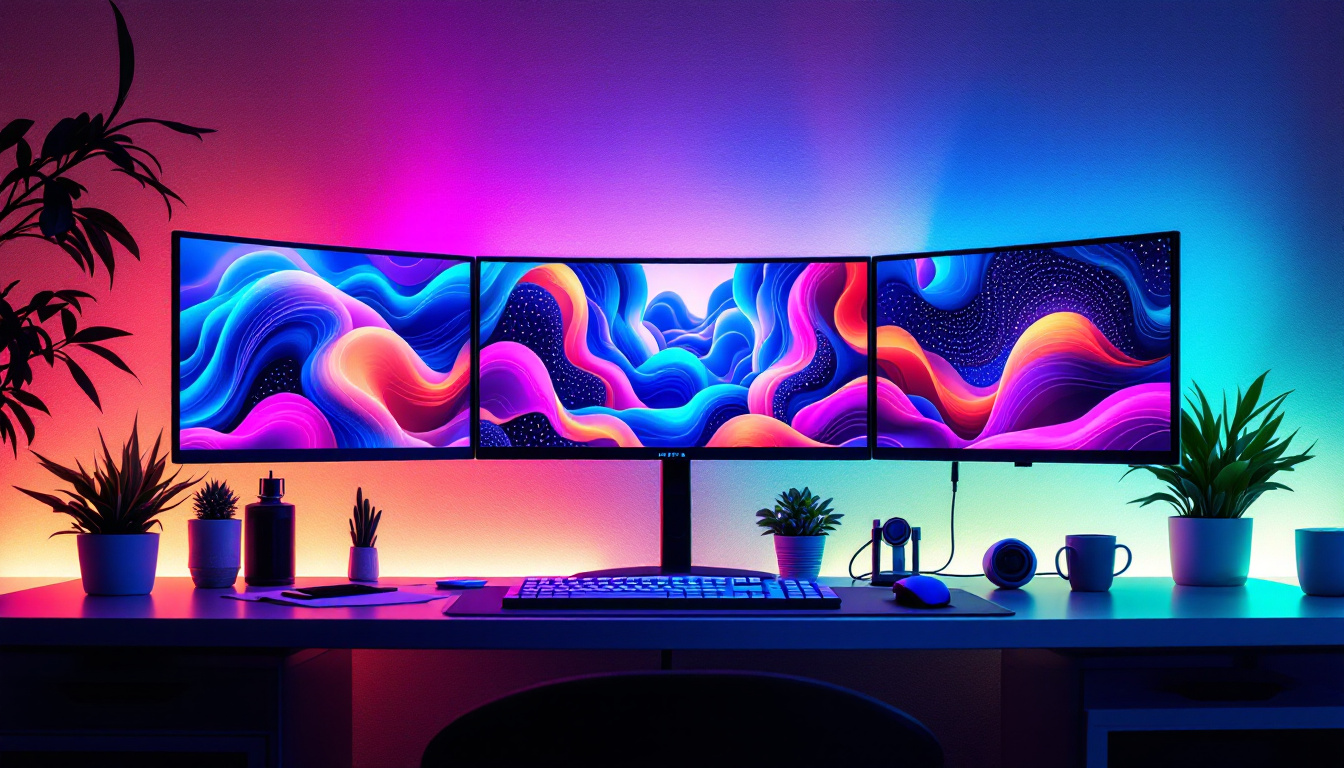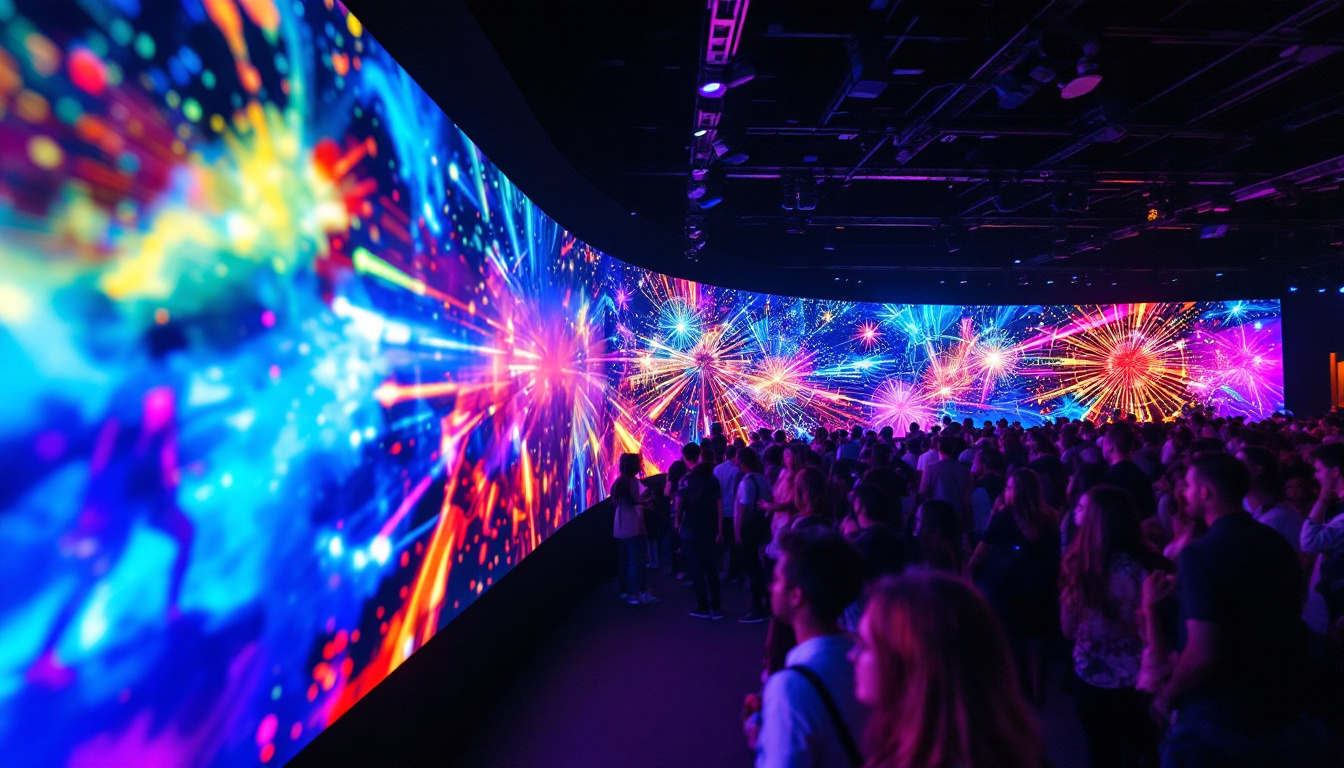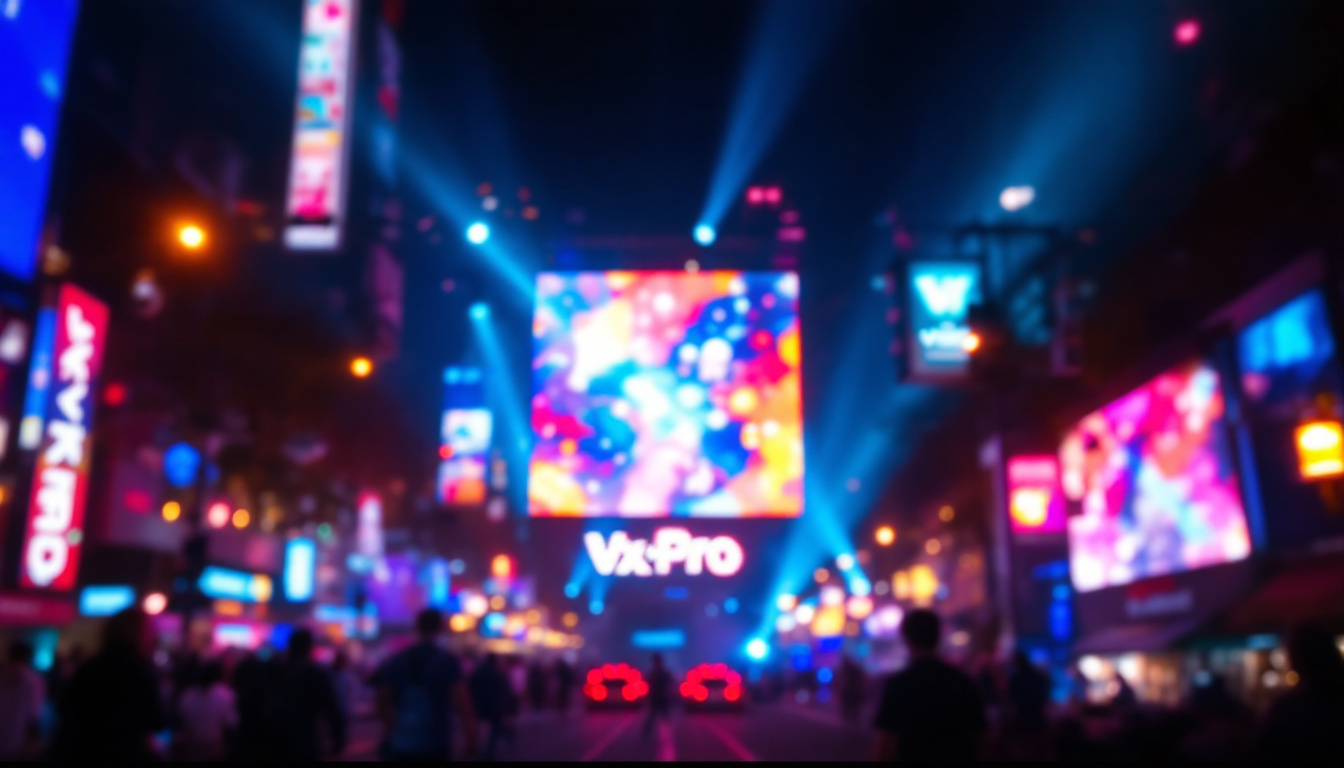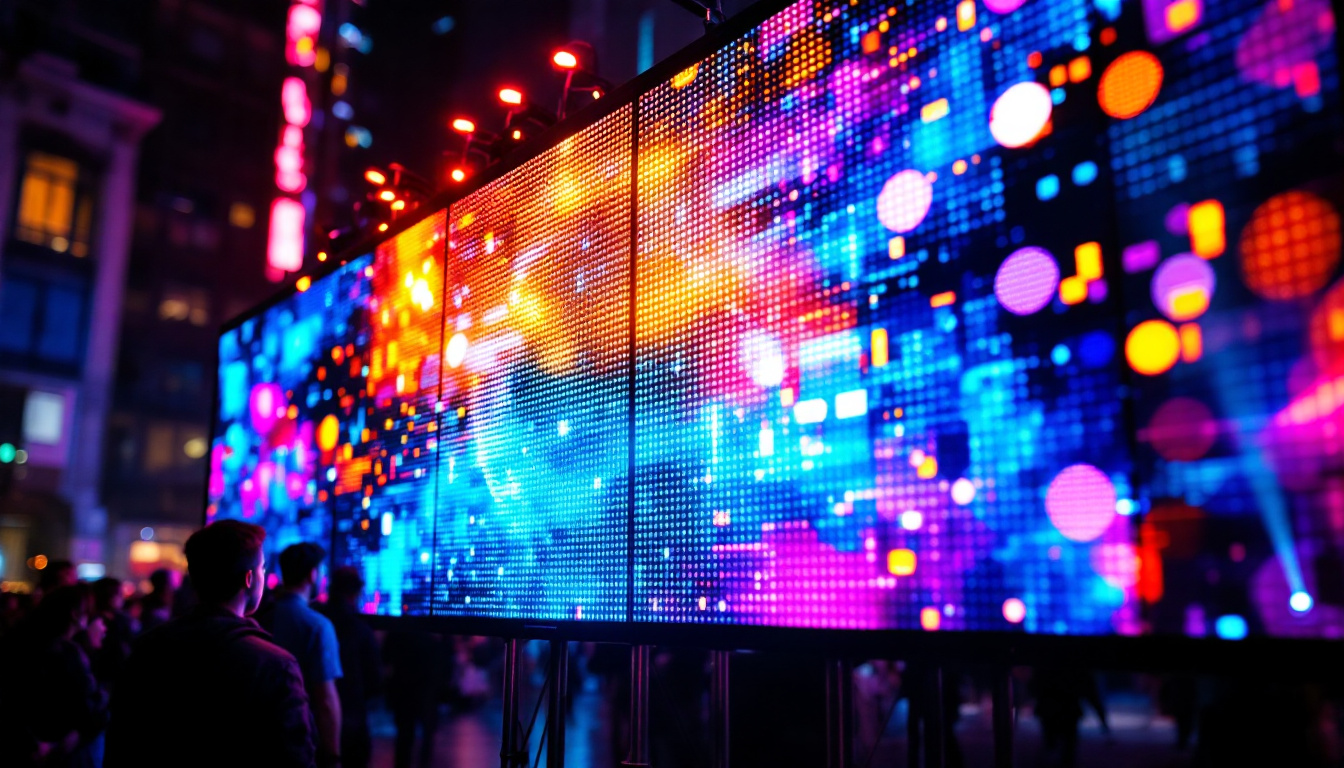In recent years, LED displays have become ubiquitous in various sectors, from advertising to entertainment. Their vibrant colors, energy efficiency, and versatility make them a popular choice for many applications. This article aims to demystify LED display technology, exploring its components, types, advantages, and applications.
Understanding LED Technology
LED, or Light Emitting Diode, is a semiconductor device that emits light when an electric current passes through it. Unlike traditional incandescent bulbs, which produce light through heat, LEDs are more efficient and have a longer lifespan. This section will delve deeper into how LEDs work and their significance in display technology.
How LEDs Function
The core principle behind LED technology lies in electroluminescence. When electrons move through the semiconductor material, they recombine with holes, releasing energy in the form of photons—this is the light we see. The color of the emitted light depends on the materials used in the semiconductor. By combining different colors, it is possible to create a full spectrum of light, which is essential for display applications. This ability to produce a wide range of colors is one of the reasons why LEDs have become the preferred choice for everything from household lighting to large-scale advertising displays.
Furthermore, the efficiency of LEDs is a game-changer in energy consumption. They convert a significant portion of electricity into light, unlike incandescent bulbs, which waste much of their energy as heat. This efficiency not only reduces electricity bills but also contributes to lower carbon emissions, making LEDs a more environmentally friendly option. As technology advances, innovations such as organic LEDs (OLEDs) and quantum dot LEDs (QLEDs) are emerging, promising even greater efficiency and color accuracy, further enhancing the visual experience.
The Components of an LED Display
An LED display consists of several key components, including the LED modules, a control system, and a power supply. Each module is made up of numerous individual LEDs that work together to form images and videos. The control system manages the input signals and ensures that the correct images are displayed at the right time. The power supply provides the necessary energy for the entire system to function effectively. Additionally, the arrangement of these modules can vary, allowing for flexible display sizes and shapes, which is particularly beneficial for creative advertising and artistic installations.
Moreover, the durability of LED displays is another significant advantage. Unlike traditional screens, which can be fragile and prone to damage, LED displays are often built to withstand harsh environmental conditions, making them ideal for outdoor use. They are resistant to shock and vibrations, ensuring longevity even in bustling urban settings. This robustness, combined with their high brightness levels and contrast ratios, allows LED displays to maintain visibility even in direct sunlight, making them a popular choice for billboards, stadiums, and public information displays.
Types of LED Displays
LED displays come in various forms, each suited for different applications. Understanding the different types can help in selecting the right display for specific needs. The most common types include direct-view LED displays, LED-backlit LCDs, and organic LED (OLED) displays.
Direct-View LED Displays
Direct-view LED displays are composed of individual LEDs arranged in a grid. They are often used for large outdoor screens, such as billboards and sports arenas. These displays offer high brightness and can be viewed from a distance, making them ideal for advertising and public announcements. Their modular design allows for easy customization in size and shape, enabling creative installations that can fit various architectural designs. Additionally, advancements in technology have led to improved pixel pitch, resulting in higher resolution displays that can showcase detailed images and videos, further enhancing their effectiveness in capturing audience attention.
LED-Backlit LCD Displays
Unlike direct-view LED displays, LED-backlit LCDs use LEDs to illuminate an LCD panel. This technology allows for thinner screens and better color accuracy compared to traditional LCDs. LED-backlit displays are commonly found in televisions, computer monitors, and smartphones, providing a balance between performance and energy efficiency. The use of local dimming in some models enhances contrast by allowing specific areas of the screen to be dimmed or brightened independently, resulting in deeper blacks and more vibrant colors. Furthermore, these displays often incorporate advanced technologies such as HDR (High Dynamic Range), which expands the range of colors and brightness levels, making images appear more lifelike and immersive.
Organic LED (OLED) Displays
OLED technology is a significant advancement in display technology, where organic compounds emit light when an electric current is applied. This allows for thinner displays with better contrast and color accuracy. OLED displays are widely used in high-end televisions and smartphones due to their superior picture quality and flexibility. One of the standout features of OLED is its ability to achieve true blacks, as individual pixels can be turned off completely, resulting in an infinite contrast ratio. Additionally, the flexibility of OLED technology enables curved and foldable screens, paving the way for innovative designs in consumer electronics. As manufacturers continue to refine this technology, we can expect even more applications, including transparent displays and wearable devices, further blurring the lines between digital and physical environments.
Advantages of LED Displays
LED displays offer numerous advantages over traditional display technologies. Their benefits extend beyond mere aesthetics, impacting energy consumption, maintenance, and overall performance.
Energy Efficiency
One of the most significant advantages of LED displays is their energy efficiency. LEDs consume significantly less power than traditional incandescent bulbs, which translates to lower electricity bills and a reduced carbon footprint. This efficiency is particularly beneficial for large installations that operate for extended periods.
Longevity and Durability
LEDs have a remarkably long lifespan, often exceeding 50,000 hours of use. This longevity reduces the need for frequent replacements, resulting in lower maintenance costs. Additionally, LED displays are more durable than traditional displays, as they are less susceptible to breakage and environmental factors.
Vibrant Colors and Brightness
LED displays are known for their vibrant colors and high brightness levels. This makes them suitable for various lighting conditions, including direct sunlight. The ability to produce a wide range of colors enhances the visual experience, making LED displays a preferred choice for advertising and entertainment.
Applications of LED Displays
The versatility of LED displays allows them to be used in a myriad of applications across different industries. From advertising to transportation, the uses of LED technology are far-reaching and impactful.
Advertising and Marketing
LED displays have revolutionized advertising, providing dynamic and eye-catching content that can be updated in real-time. Businesses use LED billboards and screens to promote products, services, and events, capturing the attention of potential customers. The ability to display video content adds an engaging element that static advertisements cannot achieve.
Entertainment and Events
In the entertainment industry, LED displays are used in concerts, theaters, and sporting events. Large screens provide audiences with a better viewing experience, ensuring that everyone can see the action, regardless of their location. Additionally, LED technology allows for creative visual effects, enhancing the overall atmosphere of events.
Transportation and Public Information
LED displays are also utilized in transportation systems, such as airports and train stations, to provide real-time information to travelers. Flight and train schedules, as well as announcements, are displayed on LED screens, ensuring that passengers are well-informed. This application of LED technology improves the efficiency of public transportation systems and enhances the overall travel experience.
Challenges and Considerations
Despite their many advantages, LED displays are not without challenges. Understanding these challenges can help in making informed decisions when selecting and implementing LED technology.
Initial Cost
While LED displays offer long-term savings through energy efficiency and durability, the initial investment can be higher than traditional display technologies. Businesses must weigh the upfront costs against the long-term benefits to determine if LED displays are a viable option for their needs.
Heat Management
LEDs generate heat during operation, which can affect performance and lifespan if not managed properly. Effective heat dissipation systems are essential to ensure that LED displays operate optimally. This consideration is particularly important for large installations where heat buildup can be significant.
Viewing Angles and Distance
While LED displays offer excellent brightness and color reproduction, the viewing angle can vary depending on the type of display. Direct-view LED displays may have limited viewing angles, which can affect the experience for viewers positioned at certain angles. Understanding the intended viewing distance and angle is crucial when selecting an LED display.
Future Trends in LED Display Technology
The LED display industry is continuously evolving, with advancements in technology paving the way for new possibilities. Staying informed about future trends can help businesses and consumers make strategic decisions regarding their display needs.
MicroLED Technology
MicroLED technology is an emerging trend that promises to revolutionize display technology. MicroLEDs are tiny individual LEDs that can be used to create high-resolution displays without the need for a backlight. This technology offers improved color accuracy, brightness, and energy efficiency, making it a promising option for future displays.
Flexible and Transparent Displays
Another exciting development in LED technology is the creation of flexible and transparent displays. These displays can be integrated into various surfaces, such as windows and walls, allowing for innovative advertising and design possibilities. The ability to bend and shape displays opens up new avenues for creativity in both commercial and residential applications.
Smart Displays
As technology continues to advance, the integration of smart features into LED displays is becoming more common. Smart displays can connect to the internet, allowing for real-time content updates and remote management. This capability enhances the functionality of LED displays, making them more versatile and user-friendly.
Conclusion
LED displays have transformed the way information is presented and consumed across various industries. Their energy efficiency, longevity, and vibrant visuals make them a preferred choice for businesses and consumers alike. As technology continues to evolve, the future of LED displays looks promising, with innovations such as MicroLEDs and flexible displays on the horizon. Understanding the components, types, advantages, and applications of LED displays is essential for making informed decisions in an increasingly digital world.
Whether for advertising, entertainment, or public information, LED displays are here to stay, shaping the future of visual communication.
Discover LumenMatrix LED Display Solutions
Ready to elevate your visual communication with the latest in LED display technology? Explore LumenMatrix’s comprehensive range of innovative solutions, from vibrant Indoor and Outdoor LED Wall Displays to dynamic Vehicle and Sports LED Displays. Whether you’re looking to captivate passersby with a LED Poster Display, engage fans with a Floor LED Display, or customize your message with a Custom LED Display, LumenMatrix has the state-of-the-art modules to bring your vision to life. Experience the future of digital signage with our All-in-One and LED Transparent Displays. Check out LumenMatrix LED Display Solutions today and transform how you share your message with the world.

